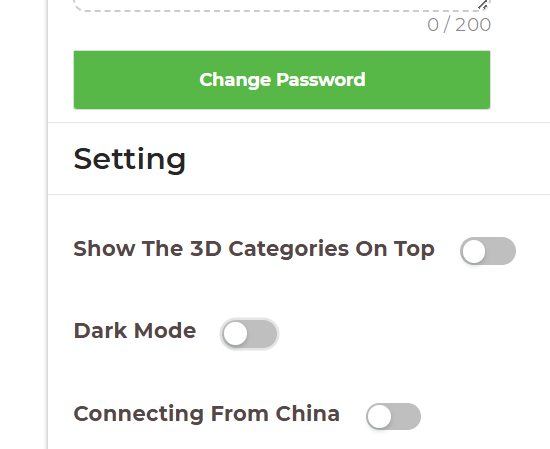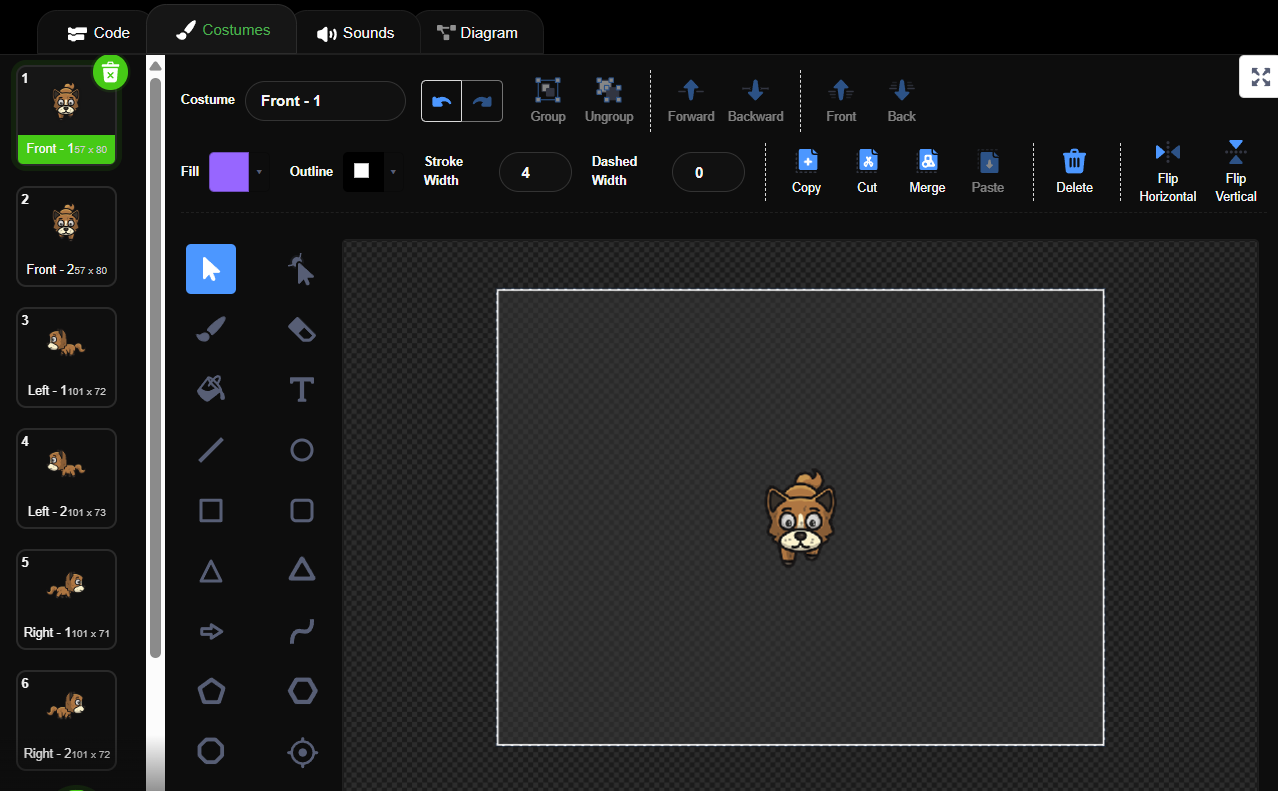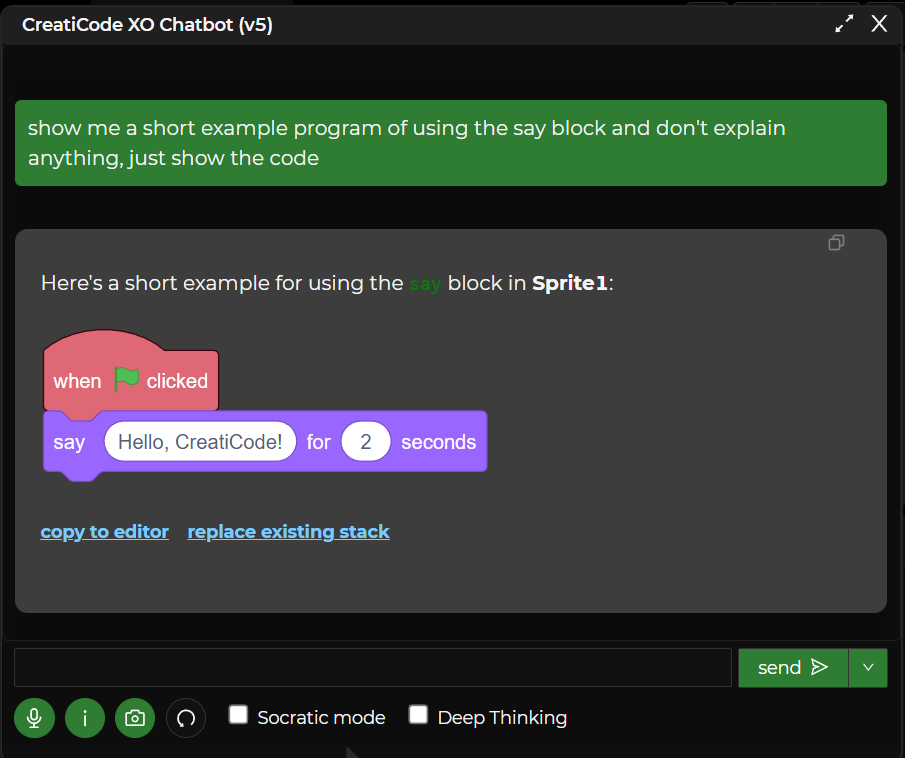Can you try this example? It attaches the user’s avatar image as a costume, then uses that costume as the user icon in the chat:
Group Details Private
Global Moderators
Forum wide moderators
Member List
-
RE: I need help with my chatting systemposted in Help
-
RE: I have a questionposted in Help
Hi, the AI assistant for coding is called “XO”. See this post: https://www.forum.creaticode.com/topic/1093/creaticode-xo-ai-assistant-explain-to-me
Also, to create an AI player, you can use the AI blocks as the decision engine. Here is an example: https://www.forum.creaticode.com/topic/961/chatgpt-ai-who-s-the-spy-difficulty-3
-
RE: Regarding Creaticode's new "13+ Projects" featureposted in Feedback
The idea is to protect younger users. Here is some high level description:
https://www.forum.creaticode.com/topic/2448/13-projects
We agree plantz vs zombie games don’t have to be 13+
-
Dark mode is available nowposted in Announcements
To make our site more accessible, we have added the dark mode. You can turn it on/off this way:
-
Click on the top right dropdown under your user name, and select “Profile”
-
In the profile page, scroll down to the settings section, and toggle the “Dark Mode” button:

Here is what it looks like:




-
-
site being upgradedposted in Announcements
We are upgrading the site, it will be unavailable/non-stable for the next 30 minutes. Sorry.
-
2D Project Frame Rates Updateposted in Announcements
We have made some improvement in our game engine for 2D projects so that the frame rate will match that of MIT Scratch, rather than going too fast sometimes. Unfortunately, this means if you have intentionally added blocks to make the game loop slower, now your game would be too slow, so please remove such blocks. Thank you.
-
Sharing projects in class studiosposted in Tools
As a student of a class, you can easily share your projects in the class studio in the following steps.
Step 1 - Open the Class Page
After logging in, click the dropdown on the top right, and select “My Classes”:

Step 2 - Open the Studio Page
For the class you are currently enrolled, select the “studios” link under it:

In the list of studios, select the studio you would like to share your project in:
Step 3 - Add Your Project to the Studio
In the studio page, you will see your shared projects at the bottom under “Add My Shared Projects”, and you can click “Add +” on any of them to add to the studio:

-
13+ Projectsposted in Announcements
The CreatiCode platform serves two groups of users:
-
Young users (elementary school students) — similar to those on MIT Scratch, who enjoy fun, creative, and age-friendly projects designed to inspire imagination and introduce coding fundamentals.
-
Older users (middle and high school students) — who are more mature and can handle projects with complex storytelling, deeper emotional or philosophical themes, and mild suspense or darker tones, such as “Plants vs. Zombies”, “Tank war”, etc. These projects encourage critical thinking, creativity, and exploration of real-world ideas in a safe and respectful way.
To ensure that older users can freely share their creative work while keeping younger users protected, we’ve introduced a new feature in the Playground. When sharing or publishing a project, you can now mark it as “Meant for users 13 or older.”

If this box is checked, anyone who opens the project will first see a notice asking them to confirm that they understand the project is intended for older users:
When sharing a new project, please consider checking this box if your project might not be suitable for young users. If you see a project that should be marked as 13+ but it is not, please remind the author to do so in the comments, or report the project directly.
Please note that all shared projects must still be appropriate for school use, including those marked as 13+. Our administrators reserve the right to reclassify projects as 13+ or remove them if necessary. Users who share or publish inappropriate content risk permanent deletion of their accounts and projects without prior notice.
-